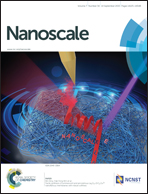Faceted metal and metal oxide nanoparticles: design, fabrication and catalysis
Abstract
The review addresses new advances in metal, bimetallic, metal oxide, and composite particles in their nanoregime for facet-selective catalytic applications. The synthesis and growth mechanisms of the particles have been summarized in brief in this review with a view to develop critical examination of the faceted morphology of the particles for catalysis. The size, shape and composition of the particles have been found to be largely irrelevant in comparison to the nature of facets in catalysis. Thus selective high- and low-index facets have been found to selectively promote adsorption, which eventually leads to an effective catalytic reaction. As a consequence, a high density of atoms rest at the corners, steps, stages, kinks etc on the catalyst surface in order to host the adsorbate efficiently and catalyze the reaction. Again, surface atomic arrangement and bond length have been found to play a dominant role in adsorption, leading to effective catalysis.


 Please wait while we load your content...
Please wait while we load your content...